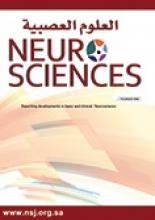The most robust evidence yet, published today in the Cochrane Library, suggests that national smoking legislation does reduce the harms of passive smoking, and particularly risks from heart disease.
The updated Cochrane review containing more up-to-date research found that countries who imposed smoking bans found their populations benefited from reduced exposure to passive smoke, specifically cardiovascular disease.
Since the first national legislation banning indoor smoking in all public places was introduced in 2004 in Ireland, there has been an increase in the number of countries, states and regions adopting similar smoke-free legislation banning smoking in public places and work places since this review was first published in 2010. The main reason for this was to protect non-smokers from the harmful health effects of exposure to second hand smoke. Another reason was to provide a supportive environment for people who want to stop smoking.
Tobacco is the second major cause of mortality in the world, and currently responsible for the death of about one in ten adults worldwide. Measures to control the demand for and supply of tobacco products, as well as to protect public health, have been demanded by the World Health Organization.
Cigarette smoking is identified as one the greatest public health disasters of the 20th century, with over 20 million attributable deaths. The World Health Organization estimates that six million people die every year from tobacco-related diseases; 600,000 from the effects of passive smoking.
A team of Irish researchers funded by the Health Research Board, Ireland included 77 studies from populations of 21 countries around the world into this updated Cochrane Review, including the US, UK, Canada and Spain. The previous review examined how smoking legislation had reduced smoke in public places, these new included studies looked at more robust evidence into the effects of passive smoking, and the associated health risks including heart disease.
Researchers found that of the 44 observational studies which specifically assessed cardiovascular disease, 33 of these studies reported evidence of a significant reduction in heart disease following the introduction of these bans. Researchers also found that the greatest reduction in admissions for heart disease following smoking legislation were identified in populations of non-smokers.
Review author, Professor Cecily Kelleher, from University College, Dublin, said: “The current evidence provides more robust support for the previous conclusions that the introduction of national legislative smoking bans does lead to improved health outcomes through a reduction in second hand smoke exposure for countries and their populations. We now need research on the continued longer-term impact of smoking bans on the health outcomes of specific sub-groups of the population, such as young children, disadvantaged and minority groups.”
Full citation: Frazer K, Callinan JE, McHugh J, van Baarsel S, Clarke A, Doherty K, Kelleher C. Legislative smoking bans for reducing harms from secondhand smoke exposure, smoking prevalence and tobacco consumption. Cochrane Database of Systematic Reviews 2016, Issue 1. Art. No.: CD005992. DOI: 10.1002/14651858.CD005992.pub3.
Copyright © 2016 The Cochrane Collaboration. Published by John Wiley & Sons, Ltd., reproduced with permission.
- Copyright: © Neurosciences
Neurosciences is an Open Access journal and articles published are distributed under the terms of the Creative Commons Attribution-NonCommercial License (CC BY-NC). Readers may copy, distribute, and display the work for non-commercial purposes with the proper citation of the original work.






